CALLOT, Jacques (1592-1635)
CALLOT, Jacques (1592-1635) Balli di Sfessania (Lieure 379-402) the complete set of 23 etchings and the title, 1621, very fine early impressions, Lieure's first states (of two), printing with sharp plate edges and a light tone, with margins, in very good condition P. 2 x 3 5/8 in. (73 x 95 mm.) (and similar) S. 3 x 4 in. (82 x 110 mm. ) (and similar) Literature: Jules Lieure, Jacques Callot , Editions de la Gazette des Beaux-Arts, Paris, 1929. Daniel Ternois, L'Art de Jacques Callot , Paris, 1962. Callot returned to his home town of Nancy in 1621, having lived in Italy since 1609. As soon as he had arrived back in France, he began writing to his friends in Florence, and the tone of these letters reveals how attached he still was to this ' noble ville '. In one of his letters to Curzio Picchena, a minister in the Tuscan Court, he writes ' il me vient une telle mlancholie que, sans l'espérance que j'ai de retourner là-bas,(...) je crois que je mourrais '. (J. Lieure, Jacques Callot , p. 11) Eager to give to his family and compatriots an idea of what Florentine life was like, with its endless carnivals and festivals, he set to work on the Balli di Sfessania . The scenes are populated with the dancer-acrobats who performed in the town squares or at the fairs of the time, and not simply, as originally thought, with the actors or ' tipi fissi ' of the commedia dell'arte (although the spirit of the latter undoubtedly pervades the Balli ). The sfessania , a Neapolitan term for the popular dance known in Malta as the moresca , was originally a war dance, recalling the old combats between Christian and Moors. In Naples, the sfessania seems to have been infiltrated with parts of another, more erotic dance, probably Turkish in origin, which was always accompanied by a song entitled Lucia . A few lyrics from this song are inscribed below the figures of the frontispiece of the set. These are thus not the names of the musicians, but in fact the words that they are singing. Some of the names that do label the figures may have come from the Confidenti or the Accesi , two travelling groups who performed in Florence when Callot was there; others may have simply been popular names of the time. In each scene a network of parallel lines, of perpendiculars and of diagonals, contribute to the visual equilibrium and vitality of the whole. In the backgrounds, small scenes echoing the foreground drama are finally etched, so clear and distinct in our fine first state examples. The theme of the aggressiveness of human nature, apparent in the savage moresca , has been transformed by Callot into something comical and grotesque. He portrays these contorted masked figures in pairs, back to back or face to face, creating rhythms evocative of the dance itself. Pierre Lavallée writes, "Tout ce qui danse, tout ce qui bondit autour de lui, il le capte, le résume dans la synthé se magistrale d'un brillant trait de plume ou de sanguine. Saisir au vol la vie qui passe, représenter les figures en action et souvent dans des actions violentes, de manié re á suggérer l'idée de mouvement de l'esprit du spectateur, voilá l'invention de Callot..." (Pierre Lavallée, Le Dessin français , p. 31, quoted in: D. Ternois, L'Art de Jacques Callot , p. 142-3). (6)
CALLOT, Jacques (1592-1635)
CALLOT, Jacques (1592-1635) Balli di Sfessania (Lieure 379-402) the complete set of 23 etchings and the title, 1621, very fine early impressions, Lieure's first states (of two), printing with sharp plate edges and a light tone, with margins, in very good condition P. 2 x 3 5/8 in. (73 x 95 mm.) (and similar) S. 3 x 4 in. (82 x 110 mm. ) (and similar) Literature: Jules Lieure, Jacques Callot , Editions de la Gazette des Beaux-Arts, Paris, 1929. Daniel Ternois, L'Art de Jacques Callot , Paris, 1962. Callot returned to his home town of Nancy in 1621, having lived in Italy since 1609. As soon as he had arrived back in France, he began writing to his friends in Florence, and the tone of these letters reveals how attached he still was to this ' noble ville '. In one of his letters to Curzio Picchena, a minister in the Tuscan Court, he writes ' il me vient une telle mlancholie que, sans l'espérance que j'ai de retourner là-bas,(...) je crois que je mourrais '. (J. Lieure, Jacques Callot , p. 11) Eager to give to his family and compatriots an idea of what Florentine life was like, with its endless carnivals and festivals, he set to work on the Balli di Sfessania . The scenes are populated with the dancer-acrobats who performed in the town squares or at the fairs of the time, and not simply, as originally thought, with the actors or ' tipi fissi ' of the commedia dell'arte (although the spirit of the latter undoubtedly pervades the Balli ). The sfessania , a Neapolitan term for the popular dance known in Malta as the moresca , was originally a war dance, recalling the old combats between Christian and Moors. In Naples, the sfessania seems to have been infiltrated with parts of another, more erotic dance, probably Turkish in origin, which was always accompanied by a song entitled Lucia . A few lyrics from this song are inscribed below the figures of the frontispiece of the set. These are thus not the names of the musicians, but in fact the words that they are singing. Some of the names that do label the figures may have come from the Confidenti or the Accesi , two travelling groups who performed in Florence when Callot was there; others may have simply been popular names of the time. In each scene a network of parallel lines, of perpendiculars and of diagonals, contribute to the visual equilibrium and vitality of the whole. In the backgrounds, small scenes echoing the foreground drama are finally etched, so clear and distinct in our fine first state examples. The theme of the aggressiveness of human nature, apparent in the savage moresca , has been transformed by Callot into something comical and grotesque. He portrays these contorted masked figures in pairs, back to back or face to face, creating rhythms evocative of the dance itself. Pierre Lavallée writes, "Tout ce qui danse, tout ce qui bondit autour de lui, il le capte, le résume dans la synthé se magistrale d'un brillant trait de plume ou de sanguine. Saisir au vol la vie qui passe, représenter les figures en action et souvent dans des actions violentes, de manié re á suggérer l'idée de mouvement de l'esprit du spectateur, voilá l'invention de Callot..." (Pierre Lavallée, Le Dessin français , p. 31, quoted in: D. Ternois, L'Art de Jacques Callot , p. 142-3). (6)
.jpg)
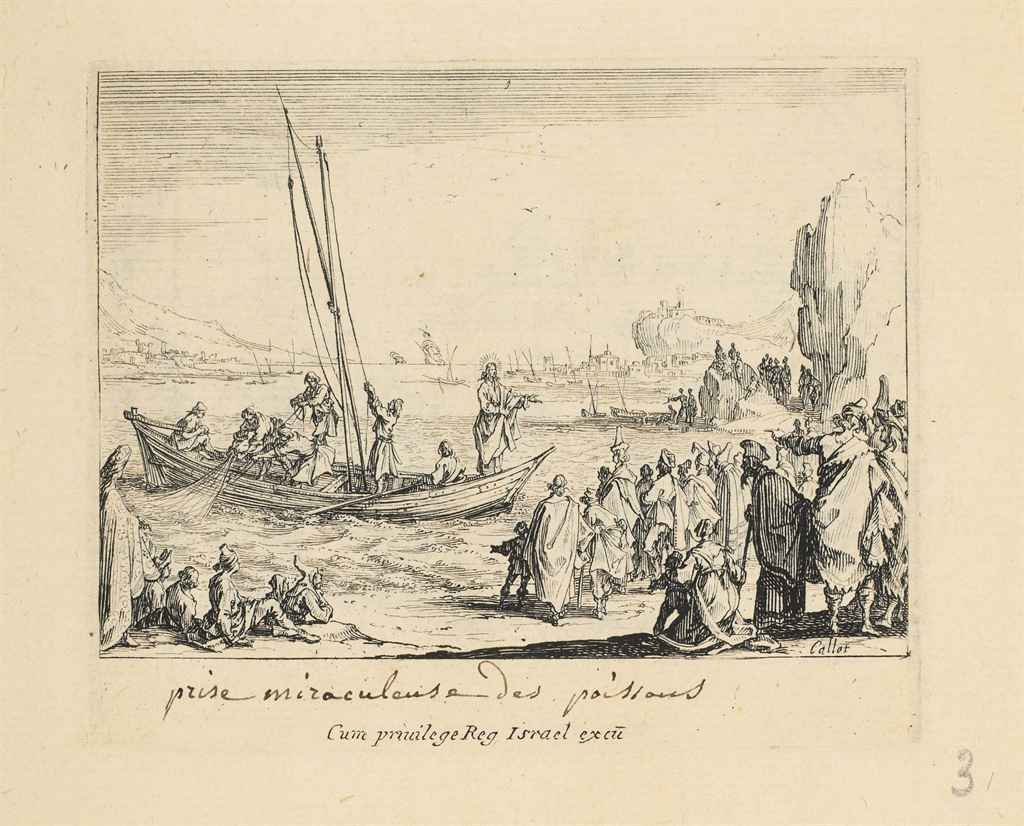
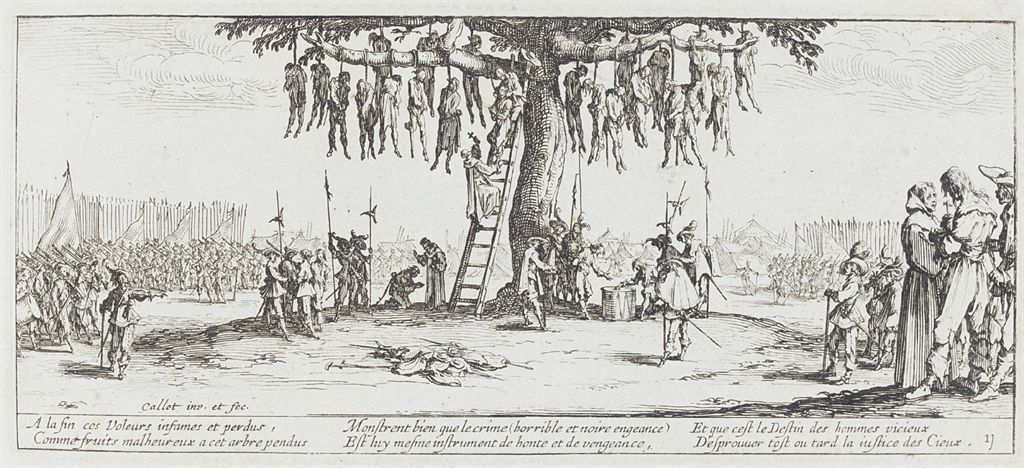
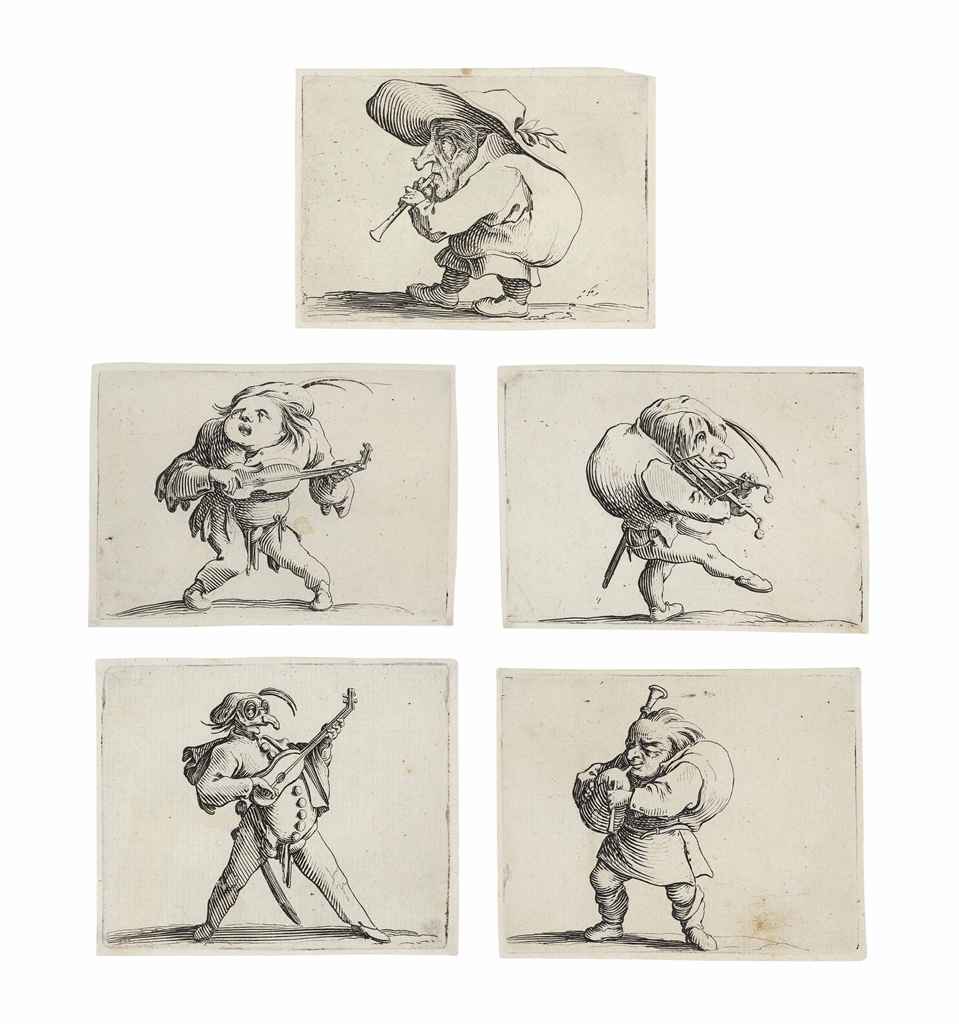
.jpg)
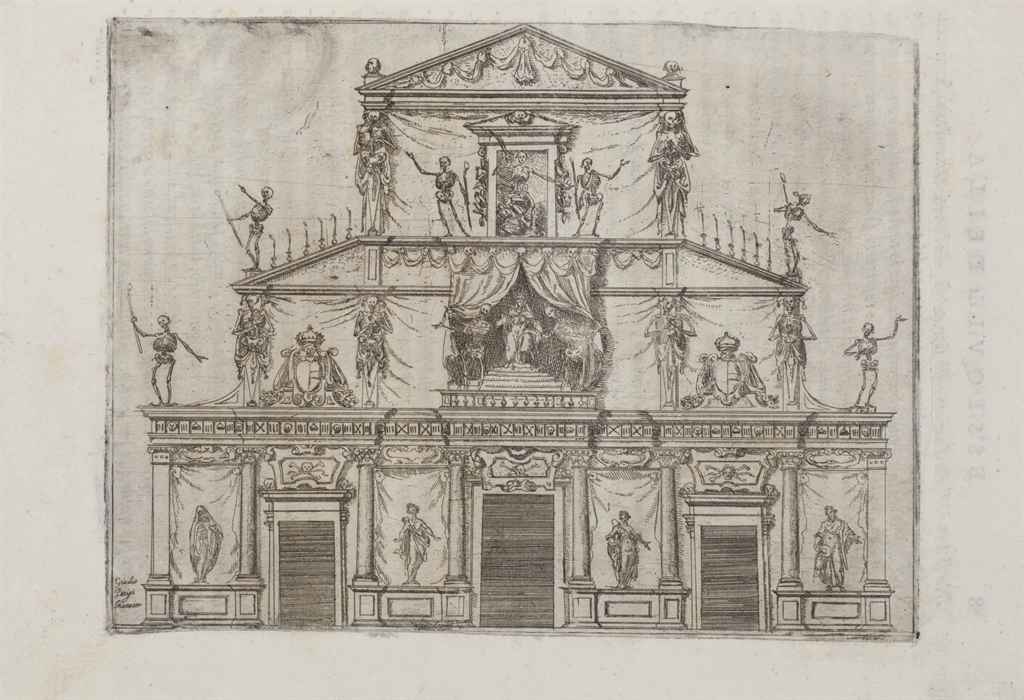




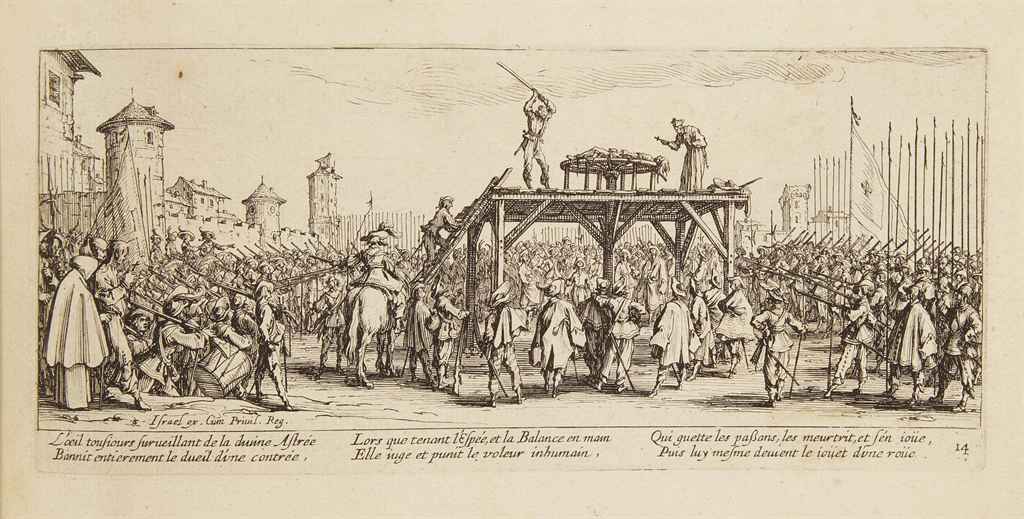
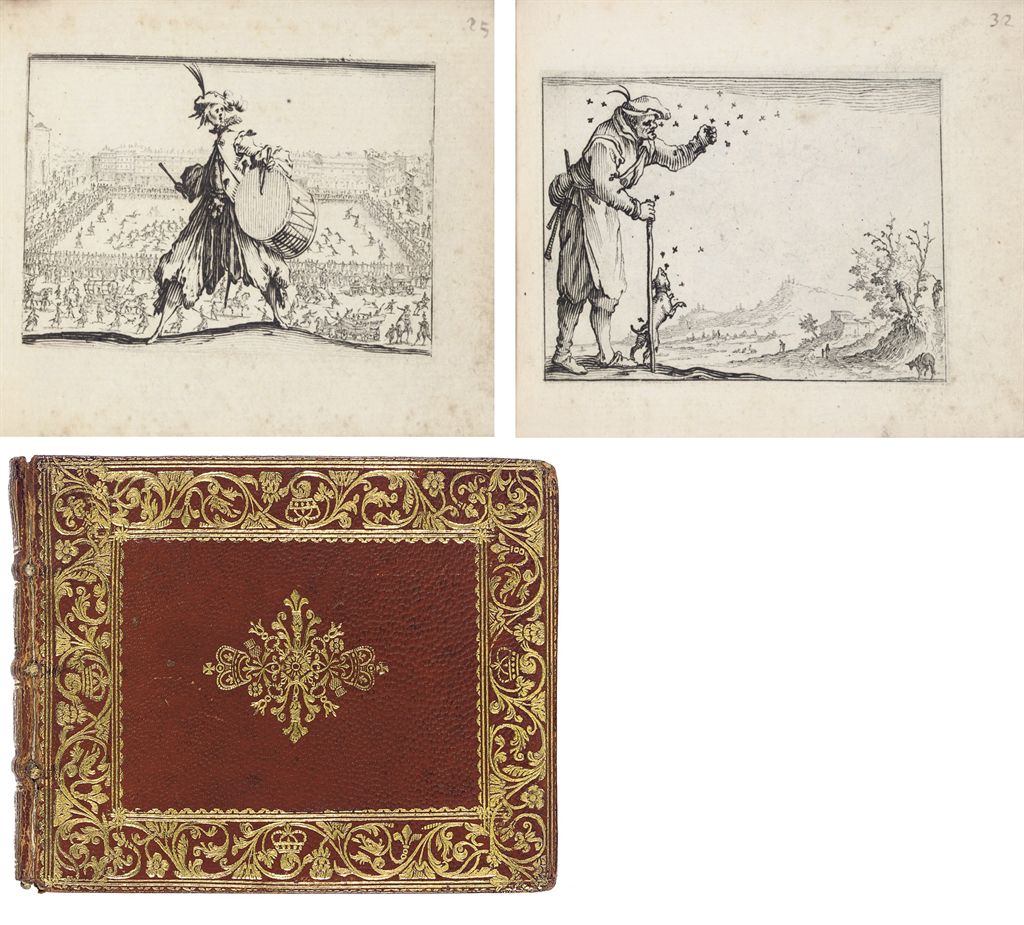
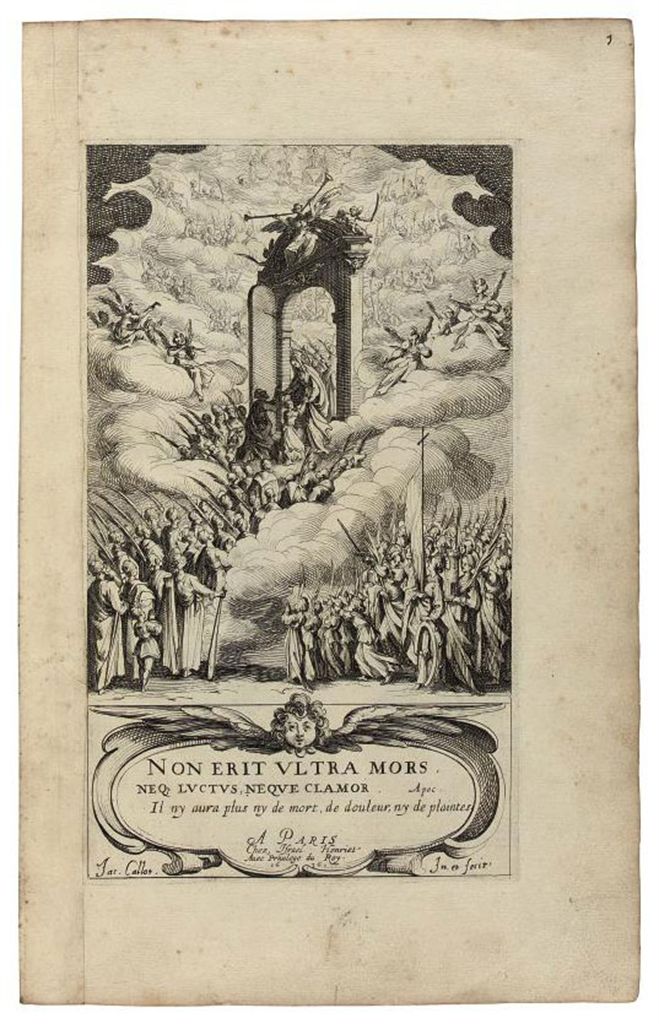
.jpg)
.jpg)
Try LotSearch and its premium features for 7 days - without any costs!
Be notified automatically about new items in upcoming auctions.
Create an alert